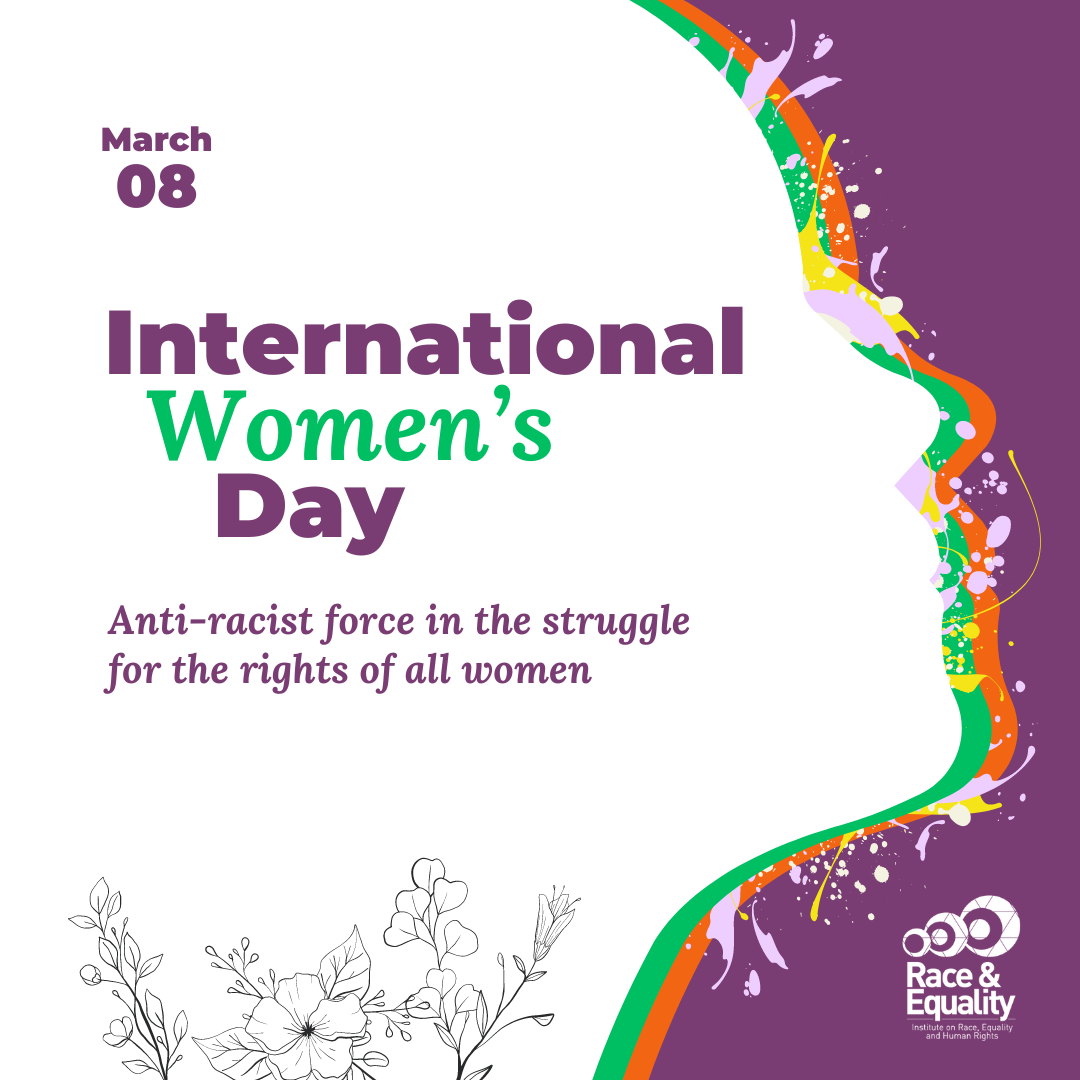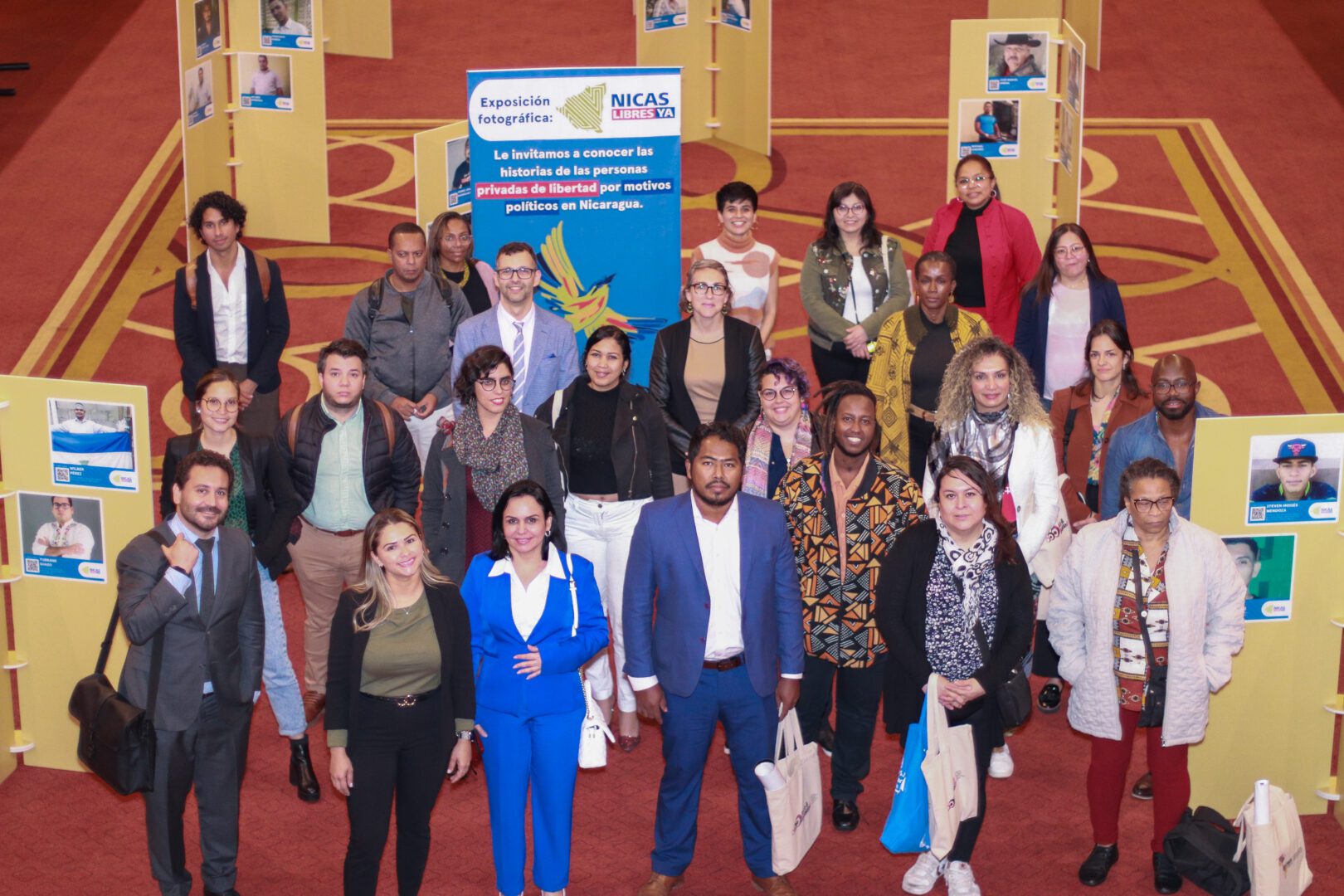8M: Anti-racist force in the struggle for the rights of all women
Washington D.C., 8 March 2024.– Since its beginnings, the movement for the rights of women has been nutured by different perspectives, amplifying it’s vision and mission in different spheres of […]

Washington D.C., 8 March 2024.– Since its beginnings, the movement for the rights of women has been nutured by different perspectives, amplifying it’s vision and mission in different spheres of society. One of these is the anti-racist perspective the, despite encountering a series of obstacles to its full incorporation, it has been the basis for important contributions to the struggle.
This March 8, International Women’s Day, we at the Institute on Race, Equality and Human Rights (Race and Equality) want to highlight the anti-racist perspective, taking into account that sexism and racism are forms of oppression that are intertwined and uniquely affect women of different ethnic and racial backgrounds, and in the case of the Americas, Afro-descendant and indigenous women in particular.
We spoke with women leaders and activists from different parts of Latin America to hear from them about the importance of the anti-racist perspective in the struggle for women’s rights, their contributions to the feminist movement, and the challenges that persist at different levels to fully incorporate this vision into the work of defending and promoting women’s rights.
Racism as a detonator of multiple violence
“The anti-racist perspective in the struggle for women’s rights is necessary if we conceive of racism as a violence that permeates the system, state and social structures, the family, our bodies, and that causes violence to increase; that is, racism recognized as structural violence also replicates and reproduces multiple forms of violence,” reflects Patricia Torres Sandoval, an indigenous P’urhépecha woman and member of the general coordination of the National Coordinating Committee of Indigenous Women (CONAMI) of Mexico.
The anti-racist perspective within feminisms is essential because it understands that the category of women is much broader or more complex than just identifying ourselves as women, it encompasses everything that would be the visibilization of the situation and experiences of Afro-descendant women, indigenous women, trans women, brings the intersectional analysis that is to think of the multiple forms of oppression such as racism, sexism, class, migratory processes, etc.,” said Gilma Vieira da Silva, regional coordinator of the Afro-descendant Youth Network of Latin America and the Caribbean (REDJUAFRO).
Vieira da Silva adds that intersectionality cannot be thought of without an ethnic-racial context, and recalls that the concept was formulated by a woman of African descent: the American lawyer and academic Kimberly Crenshaw, who devoted much of her work to understanding structural gender inequality.
Gender-based violence is not individual
Torres Sandoval points out that indigenous women have contributed to the recognition of collective violence. She explains that the phrase “My body, my territory”-which has been appropriated as a slogan by the feminist movement-emerges from indigenous women as a way of saying that violating their bodies also violates the land and the territory. “As indigenous peoples and women we recognize ourselves as an integral part of the territory and of Mother Earth, contrary to the Western perspective where we are owners of the land,” she says.
For Gahela Cari, a trans indigenous feminist from the National Federation of Peasant, Artisan, Indigenous, Native and Salaried Women of Peru, feminism is essential for processes of change; however, she points out that it is not enough if it is not anti-racist. In her words, anti-racist feminism “takes a stand in the midst of a society with so many inequalities” and shows that, in addition to gender, other systems of oppression make it impossible to live with dignity.
“We have to open processes of listening, dialogue, collective construction. Even when we do not fully understand what the other person brings to the table,” she says about a necessary task in the feminist struggle to work from an anti-racist approach. In this sense, she highlights the importance of closing the way to authoritarian processes in the country, such as what is happening with the current political regime in Peru.
Educating in an anti-racist perspective, a dual task
In this sense, Fernanda Gomes, a social worker and member of Articulação Brasileira de Lésbica (ABL), from Brazil, questions the fact that they must constantly educate about the anti-racist perspective to people and groups that do not have this vision or even exclude it.
“It’s a big challenge because we waste time thinking about public policy, writing a manifesto, to educate these people. We have to constantly be saying ‘oh so-and-so, I’m not your teacher, Google it, ask a white friend of yours.’ The black women’s, lesbian and feminist movement is also an education movement. We’re educating white people all the time and it’s exhausting,” she asserts.
Contributions and challenges
Brisa Bucardo, a journalist from the Miskito people of Nicaragua, highlights the role that women’s movements have played in the context of the country’s Caribbean Coast, as they have not only provided fundamental support to women victims of violence, but have also led citizen complaints and strengthened women’s capacities both individually and collectively. In addition, they have dismantled ingrained concepts of violence historically justified under the label of “culture”.
In terms of contributions to the struggle for women’s rights, Dunia Medina Moreno, a woman of African descent and member of the Women’s Network of Cuba, highlights the role played by women of African descent in the promotion and defense of human rights, which has resulted in a more comprehensive protection of the rights of all people in their diversity of identities.
“We must create a feminism where all women fit, an intersectional feminism where all women fit and where we can cover all the dimensions of discrimination we experience,” said Leticia Dandre Pie, a human rights activist in the Dominican Republic and member of the Movement of Dominican-Haitian Women (MUDHA).
Despite the progress made in introducing an anti-racist perspective in the struggle for women’s rights, challenges persist for real integration that translates not only into more inclusive activism, but also into the formulation of more comprehensive public policies. “We know that militancy today has to be recognized as a job, our time that we put into the struggle has to be recognized, but many times Afro-descendant women receive very few resources, trans women, women with disabilities, indigenous women are also included,” says Gilma Vieira da Silva, from REDJUAFRO.
“There are many challenges to consider the anti-racist perspective in the State, in academia and in society in general. There is a general imaginary that still places Eurocentrism as the idea of the best, of aspiring to be this hegemonic white stereotype aimed at certain parameters of aesthetic beauty, but it not only exists in the general imaginary but also permeates institutions,” says Patricia Torres Sandoval, of CONAMI Mexico.
From “white feminism” to intersectionality
One of the great criticisms of early feminism, or what we can call “white feminism,” is that it universalized the experience of white women[1]. That is to say, that in the beginning the struggle of feminism was reduced only to the needs of women who, in one way or another, were in a situation of privilege.
The anti-racist perspective in feminism is crucial because it challenges that Eurocentric and androcentric vision that has permeated many academic fields and social movements through white feminism[2]. The racialized women who came to contest these standards have provided critical analyses from their situated experiences, questioning power structures and advocating for a fuller understanding of the intersections of race, gender, and class in the struggle against oppression.
In particular, they have challenged the homogenization of the category “woman” in feminist movements, pointing out that women’s experiences vary significantly according to their race, ethnicity, class and sexual orientation[3]. This intersectional approach has enriched understanding of the interconnections between different systems of oppression.
Did you know…?
There are instruments for the protection and promotion of rights with an anti-racist approach or with a gender-race perspective. Some of them are:
- Universal Declaration of Human Rights (UDHR): this is the international document that establishes the fundamental rights of all people without any discrimination based on race or gender, among others.
- International Convention on the Elimination of All Forms of Discrimination against Women (CEDAW): this is the international instrument that specifically addresses gender discrimination and takes into account the dimensions of race and other factors. It recognizes the intersectionality of discrimination faced by women.
- International Convention on the Elimination of All Forms of Racial Discrimination (CERD): this UN treaty prohibits racial discrimination in all its forms and promotes racial equality. Although it does not focus exclusively on the gender perspective, it recognizes the intersectionality of discrimination.
- Beijing Declaration and Platform for Action: this convention, which was adopted at the Fourth World Conference on Women in 1995, highlights intersectionality and recognizes the importance of addressing discrimination based on gender and race.
- Inter-American Convention on the Prevention, Punishment and Eradication of Violence against Women (Convention of Belém do Pará): this is the inter-American regional treaty that focuses on gender-based violence and recognizes the intersectionality of the forms of discrimination faced by women, including racism.
- ILO Convention 169 concerning Indigenous and Tribal Peoples in Independent Countries: this is the convention that addresses the rights of indigenous peoples and recognizes the importance of addressing discrimination based on race.
- American Declaration on the Rights of Indigenous Peoples: it recognizes the right of indigenous women to the recognition, protection and enjoyment of all human rights without discrimination, establishing the duty of States to eradicate all forms of violence against indigenous women.
Recommendations
In order to achieve the effective integration of a racial perspective in policies and resolutions concerning women’s rights, States and human rights bodies should:
- Formulate gender equality policies that explicitly include the intersectional perspective in the formulation of gender equality policies.
- Promote diversity at all levels of leadership to reflect different experiences.
- Implement educational programs that highlight the importance of understanding the complexities of intersectionality. In particular, promote awareness of the importance of intersectionality at all levels of government, as well as in judicial decision-making bodies, so that this perspective is replicated in their decisions.
- Support and promote organizations working on the intersection of gender and race.
- Regularly evaluate the effectiveness of policies, making sure to address multiple layers of discrimination.
[1]Parra, Fabiana (2021). Feminism will be anti-racist or it will not be. Joselito Bembé. Revista Político Cultural, nro. 2, p. 42, available in: https://www.memoria.fahce.unlp.edu.ar/art_revistas/pr.12875/pr.12875.pdf
[2] Curiel, Ochy (2007). Postcolonial critique from the political practices of anti-racist feminism. Nómadas, ISSN 0121-7550, ISSN-e 2539-4762, No. 26, p. 93, available in: https://dialnet.unirioja.es/servlet/articulo?codigo=3997720
[3] Boddenberg, Sophia (2018). Indigenous and Afro-descendant women, intersectionality and decolonial feminism in Latin America.Búsquedas Políticas Magazine, University of Alberto Hurtado, available at: https://politicaygobierno.uahurtado.cl/wp-content/uploads/sites/8/2018/06/sophia_boddenberg_mujeres_indigenas.pdf

